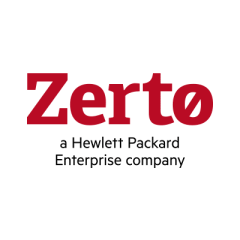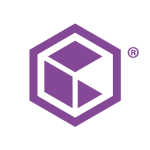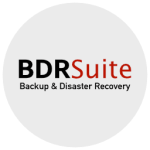What is our primary use case?
We mostly use it for disaster recovery purposes. We do a lot of migrations as well, e.g., VM from one site to another. We use Zerto for that, as we have hundreds of VMs that we protect as our main DR position using Zerto.
In general, our DR position is entirely based around Zerto. We use it for everything. We just have a couple things that we don't put on it. There are a couple of Oracle things that we replicate with different methods, but we pretty much do everything related to DR with Zerto.
We are not using it for backup. We are using it for continuous DR and replication between two on-prem sites.
We have two data center sites with bidirectional replications. Each site protects the other site and we have our VPGs that go back and forth.
How has it helped my organization?
We perform more DR testing now because it is so easy. For example, what we are doing right now is baselines on our recovery time objectives, determining, "Okay, if we recover one VM, it takes this long. If we recover another VM this size, it is this long." Then, we recover 10, 100, and 800. That way, we get kind of a forecast, when we add VMs, about how that will affect our DR stance.
When we need to move a VM from one data center to another, it is replicated there. We don't need to do any snapshots of storage. We just make a VPG for it, do a move action, and it is just there. It works really well.
What is most valuable?
The test features have been really good for us. Our DR testing goes very quickly and easily now for all our stuff with Zerto. We have our priority recovery process, where we cover our databases for our app servers and web servers. All our teams pretty much get their VMs very quickly. The RPOs are very low.
It is very easy to use. There are a lot of training materials online on the Zerto portal, which make it very simple to learn and use. You could go from not knowing how to use it to fully understanding all of it in a day. This can be done by using the Zerto University, getting your little certification and making your boss happy. It is pretty easy to set up VPG-wise.
You have a 24-hour journal. The amount of disasters and things that you can recover from using a 24-hour journal is huge, e.g., ransomware. We haven't had to do that yet, but the possibility is there. It is good to know that you can go back as far as you need.
What needs improvement?
I would like to see the app be more like the analytics site. Right now, when you go into the analytics, you need to zoom in real tight on your browser. You get a lot more from the analytics site than you do from the app. If they made those two more similar, it would be really useful for day-to-day monitoring of your stuff.
I don't like the evacuation process. The host evacuation process could be a little simpler too. It takes our maintenance a bit longer, when we are doing host maintenance, because we still need to evacuate the vRAs manually. I know they tried to make it more automatic, but it is not quite there yet.
For how long have I used the solution?
I have been using it for at least three years in my job function.
What do I think about the stability of the solution?
We have had no problems with it. Stability-wise, I can only say positive things because we haven't had any real negatives with it.
What do I think about the scalability of the solution?
It is very scalable. If you add a data center, then you just add a ZVM at that data center, link it up, and add your vRAs. After that, you are ready to start making VPGs. It is very simple to set up.
We don't have issues with scaling. If a vRA is getting a bit overloaded, it makes little vRAs. So, it kind of handles itself. We have our vRAs at the maximum size, as far as CPU and memory, that they can be. Our RPOs are really short, so we are doing pretty well for our size.
How are customer service and support?
Zerto's support is always responsive. I have never had any problems with it. Our lead Zerto engineer does a lot more stuff than I do as far as with support. Typically, I will escalate to her. If there is an issue, then I defer to her. However, as far as my experience with support, I have experienced nothing but good things. The learning portal, myZerto portal, and analytics are very good. I don't have to use support very often, which is a good thing.
If I were to rate it, I would probably rate it as 10 out of 10. Every time that I have needed them, they have been responsive and quick. I haven't used them that much, but when I have, they have been very responsive.
How would you rate customer service and support?
Which solution did I use previously and why did I switch?
We have used SRM, who is Zerto's main competitor.
SRM was pretty quick. However, the speed of recovery with Zerto is so simple. It can failover, e.g., do whatever kind of failover you want it to do. You choose your VPGs, then you are off. It is really fast and simple. A lot of people could handle using it pretty easily.
How was the initial setup?
I haven't found it to be hard. When you add a new host, you just go to set up and add a new host, then it builds a vRA. It is pretty easy to manage alerts. It will tell you exactly what is wrong, e.g., this doesn't have enough scratch disk, so you need to go update that. Or, this host is offline, e.g., you forgot to evacuate it, so then you need to take it out of Zerto. So, it will alert you to that stuff.
What about the implementation team?
I have done my share of deploying vRAs. Though, our lead Zerto engineer handled most of that stuff from the initial setup.
What was our ROI?
We have definitely seen a return on investment. We can move any of our VMs from either of our data centers back and forth very easily, bringing them back and doing tests as frequently as we want. We will be doing two tests next week. At previous companies, we did one test a year. Now, we are doing different stacks, e.g., if we do 20, 100, or 700 VMS, then it will be this long. So, we can forecast additional workload and how much that will affect our DR position.
Zerto is definitely a lot easier to manage. My whole team knows how to use it, since it is very simple to use and intuitive. There are a couple people who use it and I am the secondary person. We have someone who basically lives in Zerto. She adds stuff on a daily basis and we are always on top of our updates. We are always looking at whatever new features come out. We try to maximize our journals. We are up to 24 hours on a lot of them. Our average RPO is eight seconds, and that is pretty good since we have 1,500 VMs and 280-plus VPGs. We have a pretty big on-prem environment. So, the good thing about it is the frequency and ease of testing because Zerto is very simple to use. DR has enough problems to deal with and Zerto makes things a lot easier.
Which other solutions did I evaluate?
We have looked at Veeam and SRM. We examined the marketplace, Gartner, etc. This product that management chose, and we are pretty happy with it.
What other advice do I have?
Give it a try. Move some VMs back and forth to see how easy it is to use. The one-to-many is pretty good. We have two sites, so it is not a very big deal for us to do that, but it is very useful.
I would rate Zerto as 10 out of 10. I love Zerto's CDP solution. It is really easy to use. It does everything that we need it to do and scales easily.
Which deployment model are you using for this solution?
On-premises
Disclosure: I am a real user, and this review is based on my own experience and opinions.


















